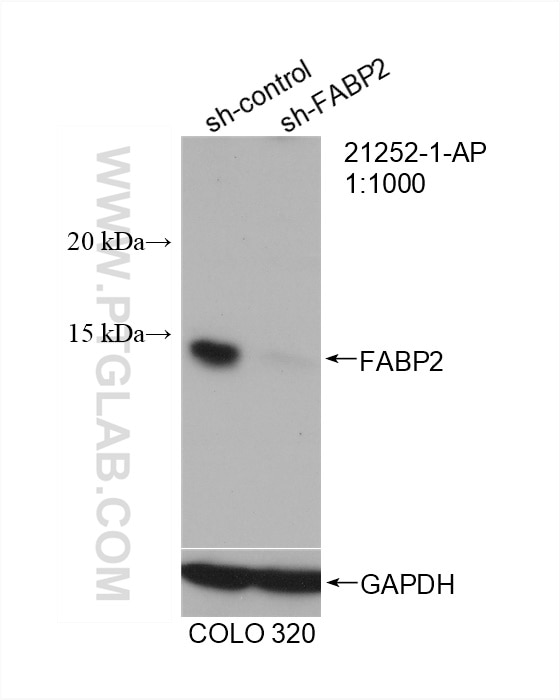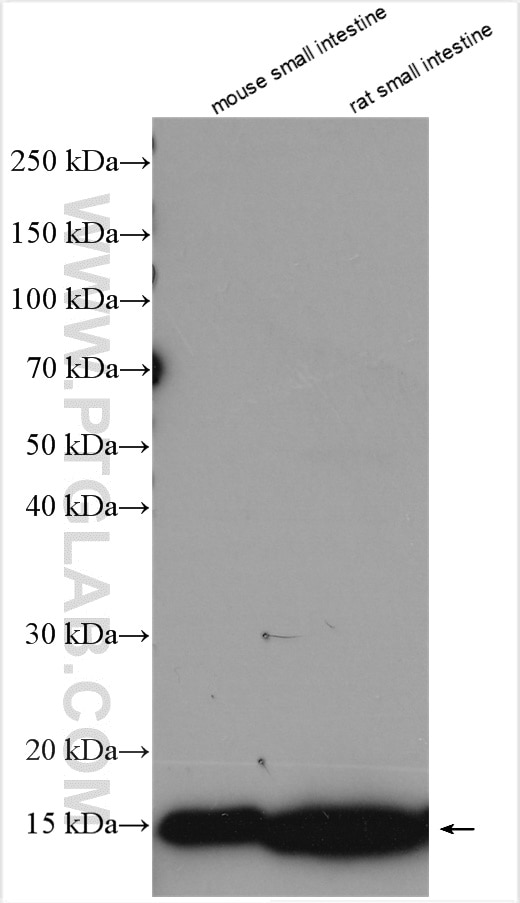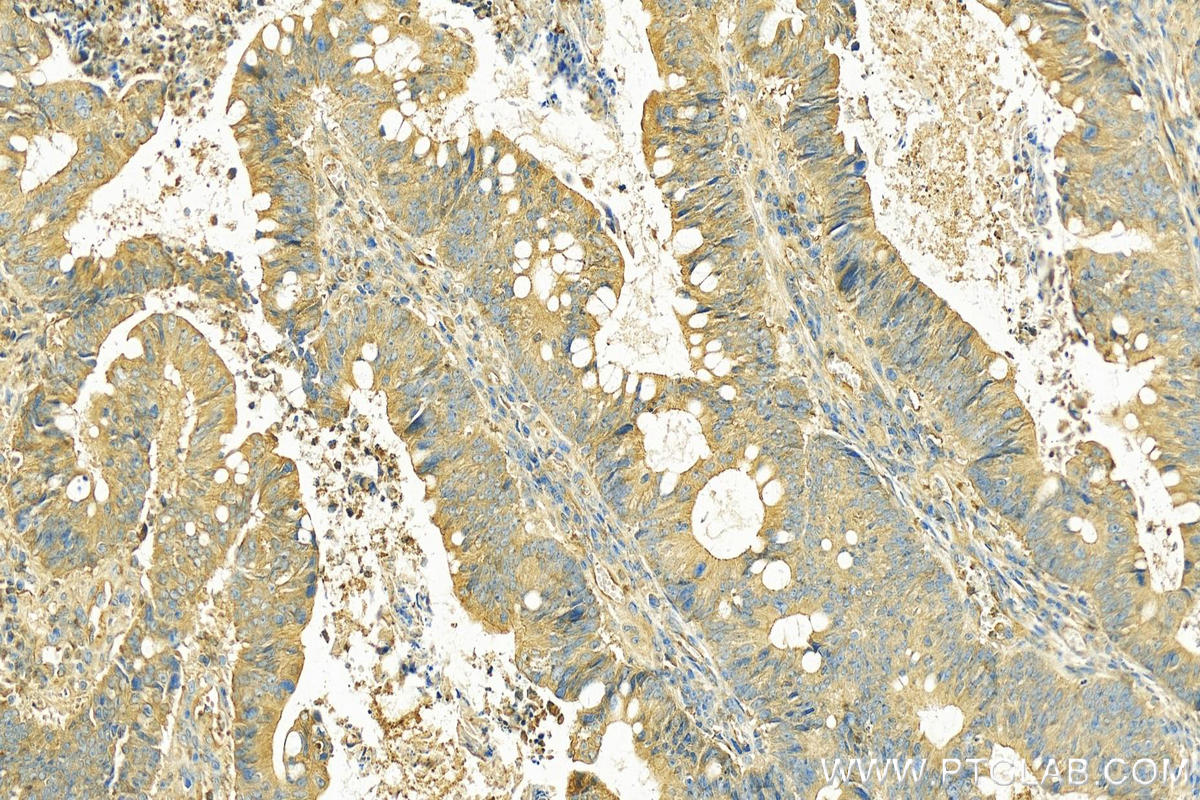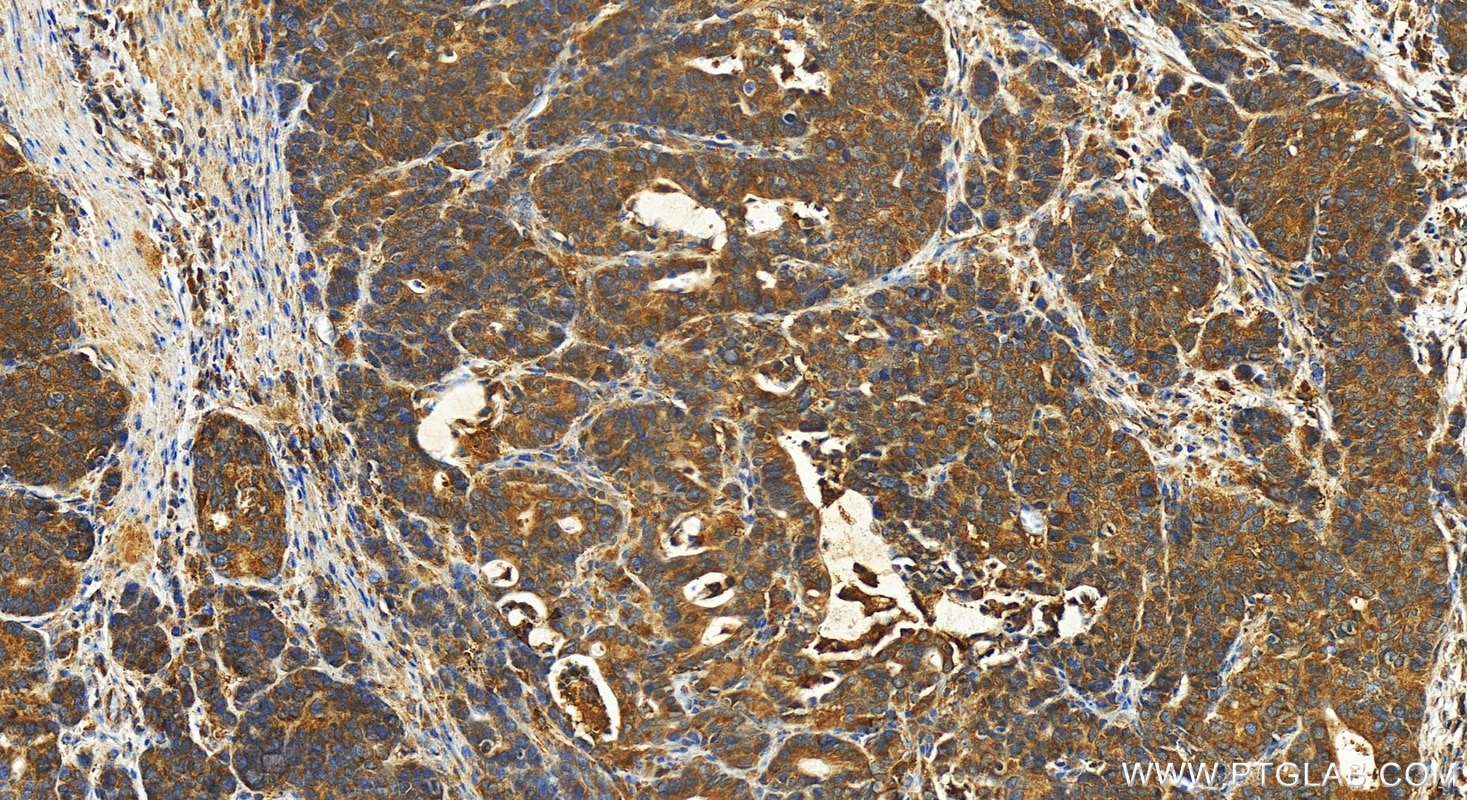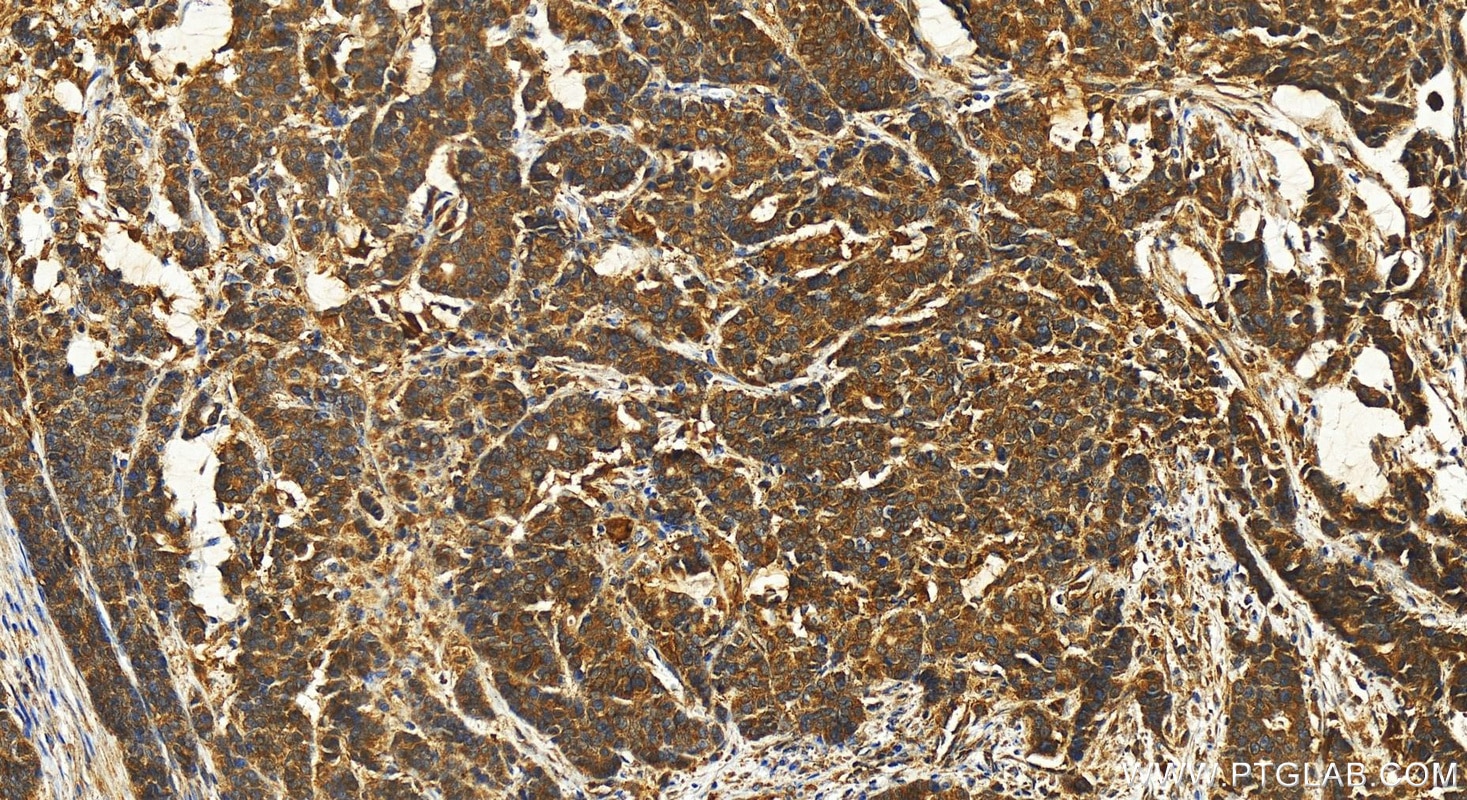- Featured Product
- KD/KO Validated
FABP2 Polyklonaler Antikörper
FABP2 Polyklonal Antikörper für WB, IHC, ELISA
Wirt / Isotyp
Kaninchen / IgG
Getestete Reaktivität
human, Maus, Ratte und mehr (2)
Anwendung
WB, IHC, ELISA
Konjugation
Unkonjugiert
Kat-Nr. : 21252-1-AP
Synonyme
Geprüfte Anwendungen
| Erfolgreiche Detektion in WB | COLO 320-Zellen, Maus-Dünndarmgewebe, Ratten-Dünndarmgewebe |
| Erfolgreiche Detektion in IHC | humanes Magenkrebsgewebe, humanes Kolonkarzinomgewebe Hinweis: Antigendemaskierung mit TE-Puffer pH 9,0 empfohlen. (*) Wahlweise kann die Antigendemaskierung auch mit Citratpuffer pH 6,0 erfolgen. |
Empfohlene Verdünnung
| Anwendung | Verdünnung |
|---|---|
| Western Blot (WB) | WB : 1:500-1:2000 |
| Immunhistochemie (IHC) | IHC : 1:50-1:500 |
| It is recommended that this reagent should be titrated in each testing system to obtain optimal results. | |
| Sample-dependent, check data in validation data gallery | |
Veröffentlichte Anwendungen
| WB | See 15 publications below |
Produktinformation
21252-1-AP bindet in WB, IHC, ELISA FABP2 und zeigt Reaktivität mit human, Maus, Ratten
| Getestete Reaktivität | human, Maus, Ratte |
| In Publikationen genannte Reaktivität | Hausschwein, Huhn, Maus, Ratte |
| Wirt / Isotyp | Kaninchen / IgG |
| Klonalität | Polyklonal |
| Typ | Antikörper |
| Immunogen | FABP2 fusion protein Ag15793 |
| Vollständiger Name | fatty acid binding protein 2, intestinal |
| Berechnetes Molekulargewicht | 132 aa, 15 kDa |
| Beobachtetes Molekulargewicht | 15 kDa |
| GenBank-Zugangsnummer | BC069617 |
| Gene symbol | FABP2 |
| Gene ID (NCBI) | 2169 |
| Konjugation | Unkonjugiert |
| Form | Liquid |
| Reinigungsmethode | Antigen-Affinitätsreinigung |
| Lagerungspuffer | PBS with 0.02% sodium azide and 50% glycerol |
| Lagerungsbedingungen | Bei -20°C lagern. Nach dem Versand ein Jahr lang stabil Aliquotieren ist bei -20oC Lagerung nicht notwendig. 20ul Größen enthalten 0,1% BSA. |
Hintergrundinformationen
FABP2, also known as Intestinal Fatty Acid Binding Protein (I-FABP), is a member of the Fatty Acid Binding Proteins (FABPs) family. The cytoplasmic content of FABP2 could be delivered into the systematic circulation once the death of enterocyte happens, thus the elevated FABP2 concentration in the blood has been shown in many human intestinal diseases. FABP2 is a water soluble cytosolic protein with a small molecular weight of 14-15 kDa, and it is initially located in the mature enterocytes of the small intestine (PMID: 26547205).
Protokolle
| PRODUKTSPEZIFISCHE PROTOKOLLE | |
|---|---|
| WB protocol for FABP2 antibody 21252-1-AP | Protokoll herunterladen |
| IHC protocol for FABP2 antibody 21252-1-AP | Protokoll herunterladenl |
| STANDARD-PROTOKOLLE | |
|---|---|
| Klicken Sie hier, um unsere Standardprotokolle anzuzeigen |
Publikationen
| Species | Application | Title |
|---|---|---|
Cell Metab AIDA Selectively Mediates Downregulation of Fat Synthesis Enzymes by ERAD to Retard Intestinal Fat Absorption and Prevent Obesity. | ||
Biomaterials MMP-12 siRNA improves the homeostasis of the small intestine and metabolic dysfunction in high-fat diet feeding-induced obese mice. | ||
Cell Mol Gastroenterol Hepatol FACI Is a Novel CREB-H-Induced Protein That Inhibits Intestinal Lipid Absorption and Reverses Diet-Induced Obesity. | ||
Int J Mol Sci INT-767-A Dual Farnesoid-X Receptor (FXR) and Takeda G Protein-Coupled Receptor-5 (TGR5) Agonist Improves Survival in Rats and Attenuates Intestinal Ischemia Reperfusion Injury | ||
Microb Biotechnol Faecal microbiota transplantation-mediated jejunal microbiota changes halt high-fat diet-induced obesity in mice via retarding intestinal fat absorption | ||
Ecotoxicol Environ Saf Heat stress affects fetal brain and intestinal function associated with the alterations of placental barrier in late pregnant mouse. |
